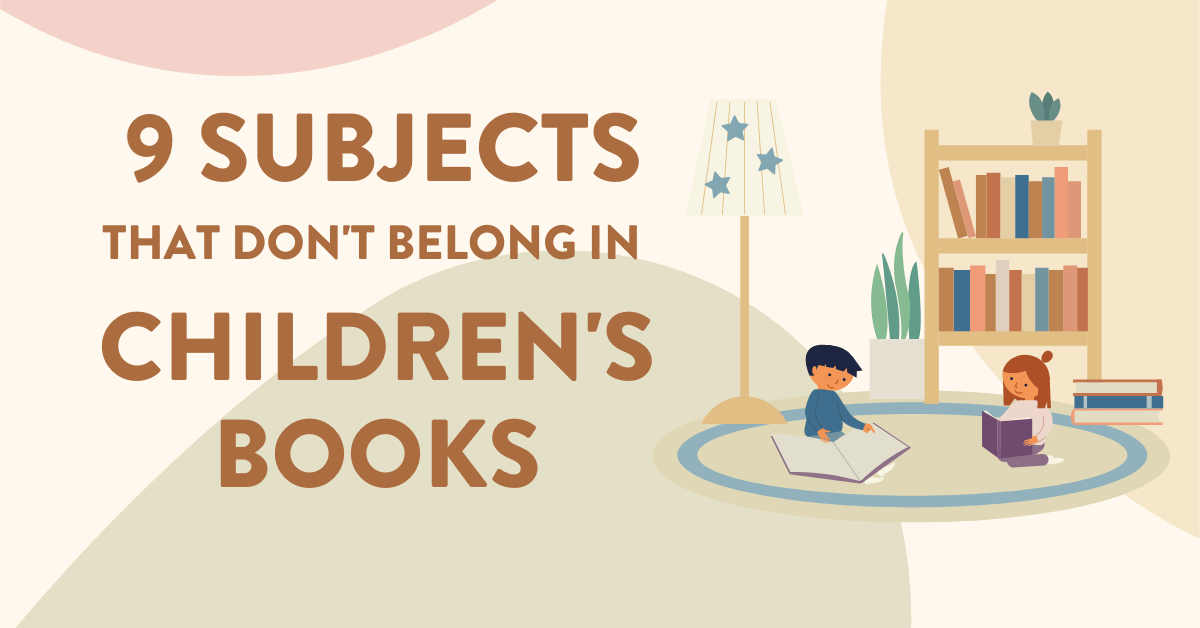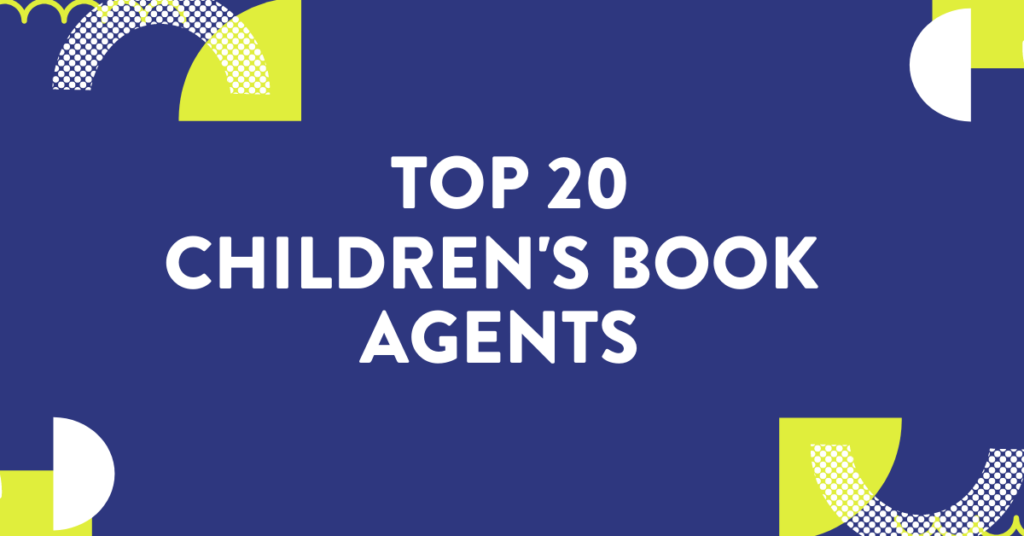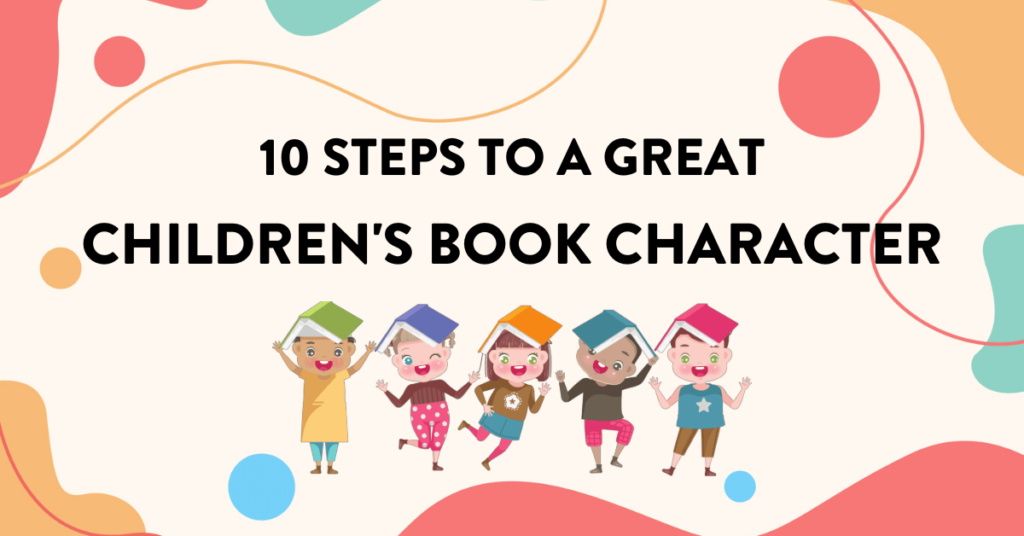
All four topics below I’ve personally seen in children’s books I’ve edited, and I’ve had to gently tell authors they don’t quite work.
It’s easy to forget your audience when writing a children’s book, and accidentally put something in there that’s only appropriate for a much older audience.
Now, I know that some people think of early children’s books like Brothers Grimm, and those include lots of violence and horrific events, but those type of books don’t get published nowadays, so I would not recommend using those as your models.
And if you want more advice like this, I’d recommend checking out my children’s book course, “Two Weeks to Your Best Children’s Book.”
1. Cursing.
You would think that this would be obvious, but you can’t have children or adults say bad words in a children book.
And I’m not only talking about the worst words you can imagine, but moderate cursing like “What the hell” or “Oh my God” (which is a religious curse). Even using curse-adjacent words is frowned upon (like darn or frick).
Instead, I would recommend making up semi-funny curses:
- Flibber-Flabber-Jam!
- You donkey face.
- What in the dolphin is that?
Or you can just avoid all cursing altogether, and have them shout harmless exclamations that are very kid-like. But please avoid all salty language.
2. Corporal Punishment.
I’m not just talking about a story where a parent actually spanks a child.
I’m talking about stories where parents threaten spanking. Though this is true to life, it doesn’t work in a children’s book (unless the whole book is about corporal punishment, in which case write the best book you can).
Children’s books are fantasies, and anything involving adults intentionally causing pain to children is a huge no-no.
This doesn’t only apply to spanking, though. Any form of corporal punishment won’t work in a children’s book:
- smacking a kid on the wrist
- slapping a face
- pinching (unless it’s playful)
Can you have a time out? Of course. You can probably get away with washing a mouth out with soap (perhaps).
In general, I’m only talking about punishments that cause physical pain.
3. Death.
This is a little trickier. Some books can approach death and do it well, but it’s a topic full of landmines.
Most of the time authors try to pull it off, they write a story that’s more appropriate for older children rather than younger ones. You have to handle death with kid gloves.
The best way to approach death is to have an animal die, rather than a family member die. That softens the blow a little. Another choice is to have all animals as the characters, rather than people, because that also makes it a little distant from a child’s direct experience.
If you do choose to write about death, make sure you find 3 children’s books that cover the topic of death, and see how they handle it (usually, it’s handled very gently). Those models can teach you how to do it, but there are a lot of pitfalls to avoid, and so I generally don’t suggest it.
4. Sexuality.
The Denmark television show “John Dillermand” is about a man with a very, very long penis. It is an animated children’s television show.
Yes, you read that right. Folks, I got news for you: this is not a good idea.
Now sometimes I see books with good intentions: educating children about avoiding sexual abuse, or promoting a vision of good sexual habits.
But parents don’t buy this type of book, which means that publishers don’t publish this type of book. There are exceptions, of course, but they’re very rare.
You can choose to try to flout this rule and include something about sex in your book, but just know it’s extremely unlikely that it will earn an audience.
Innocent desire, of course, is okay: if a boy has a crush on another girl, and tries to hold her hand in line? Well, there’s nothing wrong with something innocent like that. I’m only recommending that there’s nothing overtly sexual, not even dialogue that talks about sexuality.
5. Weapons.
In general, you can’t have a gun or a knife in a children’s book, especially if that’s being wielded with the intent to cause pain to someone else.
That’s because physical pain (other than innocuous things like a scraped knee) is against the rules in children’s books. More specifically, a person causing great harm to another person is usually verboten.
Now, obviously you can have a toy gun if a child is playing with it — that’s a clear exception.
And bullies can and do cause harm in children’s books — but don’t give them a weapon to work with.
In general, real weapons are not allowed, and this comes up more often than you would expect in unpublished children’s books that I edit.
6. Substance Abuse
This one seems like a no-brainer.
Out of the 1000+ children’s books that I’ve edited, I’ve never seen one that dealt with drug use.
But what I have seen is cigarette usage in unpublished children’s books, and this is usually a no-no. Even on mainstream television, they offer trigger warnings when there is tobacco use, and so you’re not going to be able to have a children’s book where an adult figure is smoking.
And obviously you can’t have a child smoking in the book either.
There’s only one small exception to this — if the book is about the evils of smoking, and campaigning against it, then the moral lesson could outweigh the inclusion.
7. Stereotypes
We get it. Sometimes it’s easy to fall into the trap of stereotypes. They’re familiar and can feel like a shortcut to getting your point across. But here’s the deal: Our young readers are like sponges. We want them to soak up the good stuff, not the old and tired clichés.
So, challenge yourself! Create characters with depth, ones that reflect the beautiful, diverse world we live in. If you’re writing about cultures or backgrounds different from your own, do a bit of research. Maybe even chat with someone from that background. Trust us; it’ll make your story a million times better.
An exception to the rule: Of course you can include an example of a stereotype if the point of the book is against stereotyping.
But even that should be a relatively innocent form of stereotyping — a gentle, innocent mistake, rather than an act of deliberate meanness.
8. The Doc’s Office
Alright, this one’s tricky. Health, hospitals, and healing – all super relatable.
But diving deep into the nitty-gritty of medical procedures? Might be a tad too much for the little ones. Think about it: Do they really need to know how stitches are done or what an X-ray machine looks like inside?
Don’t show blood. Especially not lots of blood in the illustrations — this is never a good idea.
Keep it sweet and simple. Focus on the character’s bravery or their super cool, colorful band-aid. If it’s essential to the story, maybe a gentle touch on the procedure, followed by a swift move to the happy healing part.
Your young readers will thank you!
9. Horror Stories
Ghost stories? Heck yes!
Monsters under the bed? Why not!
But remember, there’s a fine line between fun-spooky and sleep-with-the-lights-on spooky. It’s all about balance. An older kid might chuckle at the monster in the closet, but a younger kiddo? They might wake their parents up with a nightmare, and you don’t want your book causing nightmares.
Play around with your levels of eeriness. If in doubt, share your story with a few folks. Getting feedback is golden, especially when you’re tiptoeing on the spooky side.
Let’s Wrap It Up!
If you’ve already written your book and are ready to publish, check out Bookfox Press — we help writers just like you with the illustrations, formatting, uploading, and ISBNs.
Okay, writer pals, that’s the lowdown. Dive into those vibrant, imaginative tales but keep an eye on these nine touchy topics.
Remember, your words have power, especially with the young’uns. Avoid these topics and you’ll be one step closer to getting your book published!




2 comments
Hello
When you talk about “Children’s books” what age groups are you referring to?
There’s a “hell” of a lot of pain infliction, death and even the odd swear word (“Bloody hell”) in the Harry Potter books.
I’m talking about picture books. Harry Potter is YA (13 – 18).
MG would be 8 – 12.
Picture books are 0 -7.